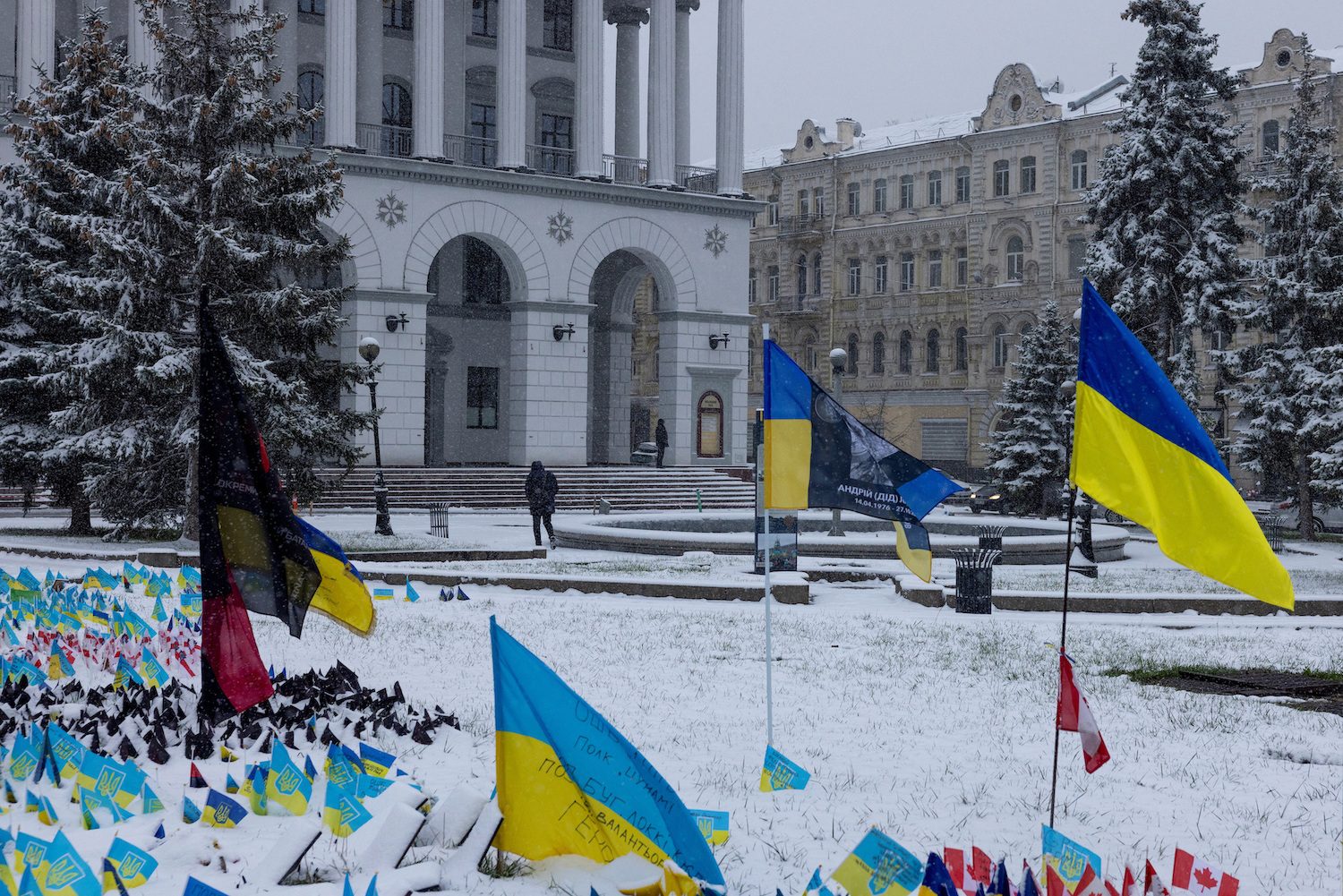SUMMARY
This is AI generated summarization, which may have errors. For context, always refer to the full article.

Ukraine’s embattled economy can weather the next few months until foreign aid arrives, but 2024 is certain to be tougher than this year and Kyiv will need to rely more heavily on its own resources.
Ukraine hopes to plug next year’s $43-billion budget deficit mostly with foreign financial aid including 18.5 billion euros from the European Union and more than $8 billion from a US package that also contains vital military assistance.
Both packages have been blocked so far – by Republicans in the US Congress and by Hungary in the European Union – but should eventually pass, though a question mark lingers over US financial aid, economists and foreign diplomats said.
Since Russia invaded in February 2022, Kyiv has plowed all of its revenue into defense and the military, while spending on everything from pensions to social payments, has been covered by tens of billions of dollars of foreign aid.
Kyiv could fall several billion dollars short of its financing needs in 2024 but a $10-billion shortfall would create problems for macroeconomic stability and its International Monetary Fund (IMF) program, said Olena Bilan, Dragon Capital’s chief economist.
The IMF – which approved a new $900-million tranche this month – requires firm financing assurances for the next 12 months, so a substantial decline in external financing could call its program into question, she said.
“The government has a liquidity reserve for January and February,” said Yurii Haidai, senior economist at the Centre for Economic Strategy, a think tank in Kyiv.
Filling a gaping hole in the budget could force Ukraine to hike taxes, which would be counterproductive for the economy, or even print money for the budget, which would also come with risks, Dragon Capital’s Bilan told Reuters.
Central Bank Governor Andriy Pyshnyi has made clear that printing money would be an extreme measure and one they do not plan to resort to this year.
Ukraine also needs to find a way to restructure about $20 billion in international debt next year after sovereign bondholders agreed to a two-year payment freeze in August 2022.
Finance Minister Serhiy Marchenko said the government hoped to secure foreign financing in full in 2024, but added that if the war lasted longer, then “the scenario will include the need to adapt to new conditions.”
Economy to grow but risks high
The economy is on course to grow around 5% this year after contracting by almost a third last year. Inflation has fallen to single digits, foreign reserves are near historic highs, and foreign aid has arrived regularly this year.
Ukrainian businesses and foreign businesses have adapted to new wartime realities with some even announcing new production facilities in central and western regions, far from the fighting in the more heavily industrial east and south.
Nestle invested 40 million Swiss francs (about $46 million) in a new facility in western Volyn region while German drugs-to-pesticides giant Bayer planned to invest 60 million euros from 2023 onwards in corn seed production in central Zhytomyr region.
But despite modest signs of recovery this year, the commodity-driven economy is still smaller than it was before the war, and risks and other constraints remain high.
Millions of Ukrainians remain abroad after fleeing the invasion, prompting many businesses to complain about a shortage of workers, especially for highly skilled positions.
The economy is also held back by Russian attempts to blockade the Black Sea, although a Ukrainian shipping route set up in defiance of Moscow this summer has helped commodities exports and may visibly boost growth next year, economists say.
Uncertainty over the direction of the war persists, and logistics for exports remain disrupted with refugees still abroad. The National Institute of Agrarian Economics said transport and logistics problems led to a 7% year-on-year drop in agrarian product exports in November and pushed up imported food costs. Food accounts for 60% of Ukraine’s exports.
The Kyiv-based ICU investment house sees growth easing to 5% in 2024 after 5.8% this year, with inflation expected to pick up next year. Dragon Capital expects gross domestic product (GDP) to grow by about 4% in 2024 after 5.2% this year.
Kyiv is also certain to remain dependent on foreign financing despite concerns Western financial support might be waning, economists said.
“We see the deficit [before foreign aid and loans] exceeding 10% of GDP at least until 2027, and going below 5% only beyond 2030,” ICU said in a research note.
Ukraine’s trade deficit ballooned to $22.3 billion in the first 10 months of 2023, a record high that illustrated how imports were surging while exports remained weak.
This month, Marchenko called on the public to cut consumption of imported goods in comments published by Ukraine’s LB.UA outlet.
He said putting the economy on a war footing meant not only building up the military industry but also the public’s understanding of the situation.
“This reality will need to be corrected if we want to go on a military footing. It is a limit on public consumption,” he said.
“If we do not draw conclusions, the economy will draw them on its own – as a rule, quite quickly and painfully.” – Rappler.com
Add a comment
How does this make you feel?







There are no comments yet. Add your comment to start the conversation.